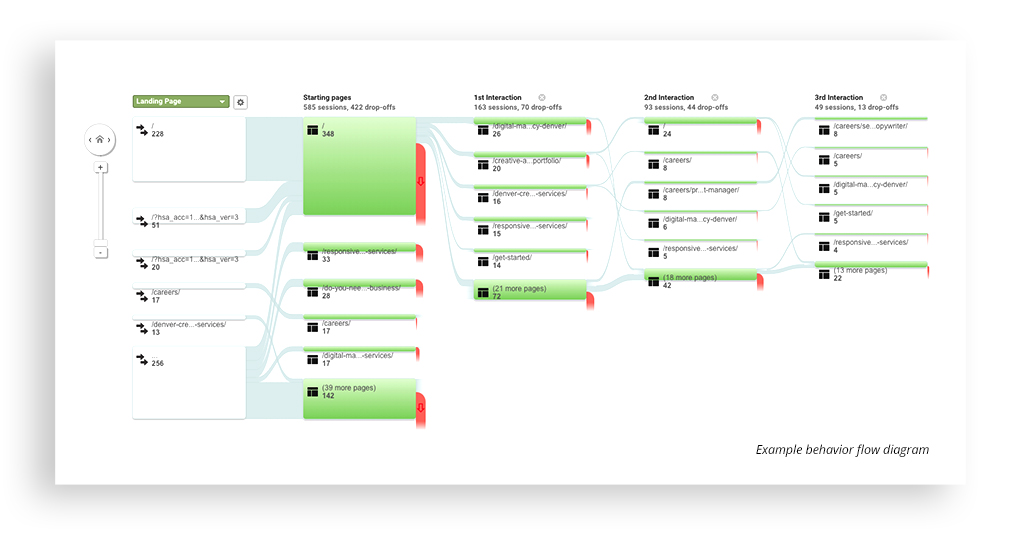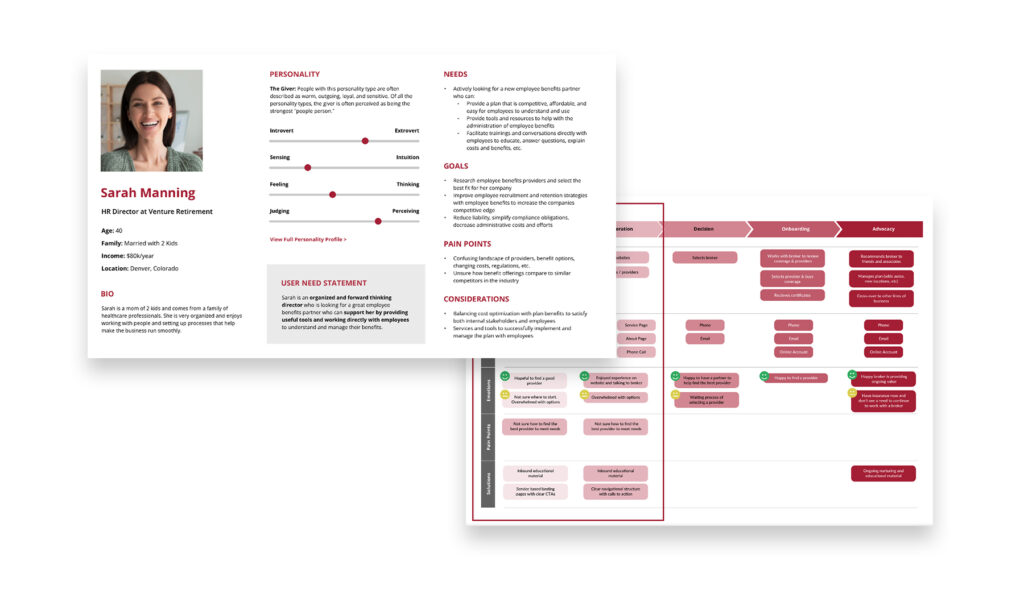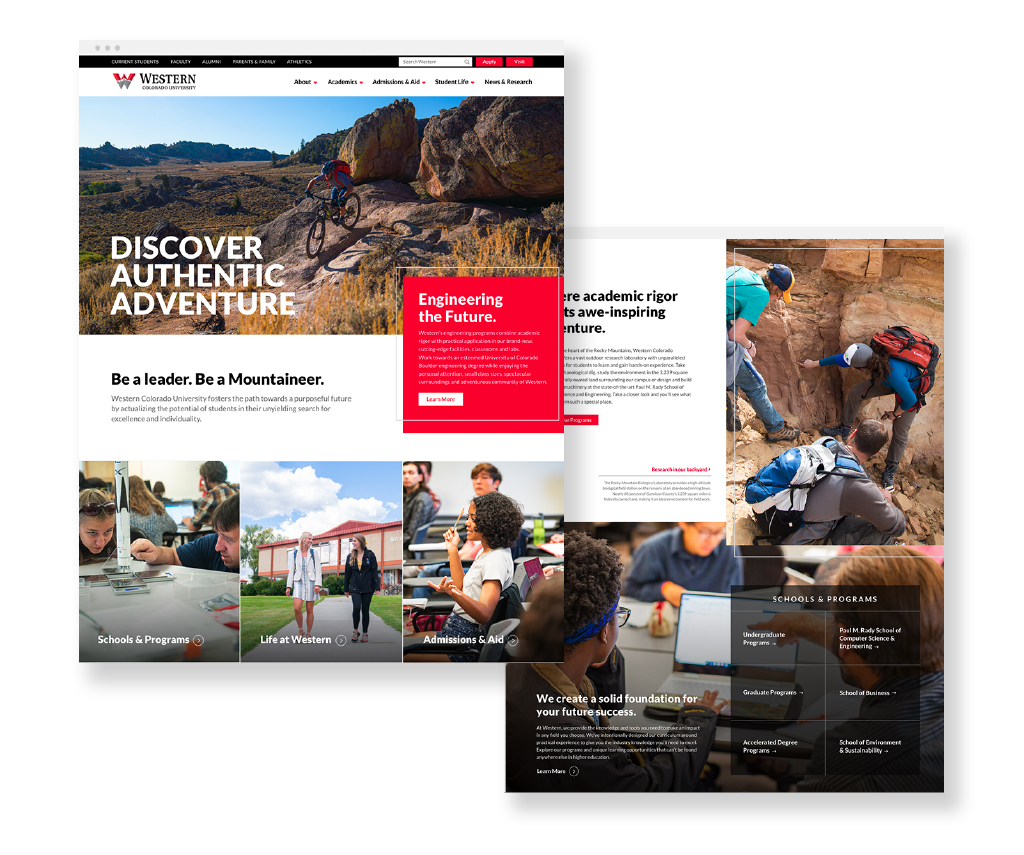Doing the Research and Gaining Insights
The first step to resolving these issues was looking at the data. What was causing people to leave the website? What were they instinctually navigating to when they landed? And which users were actually making purchases? The resulting insights shed light on the real problems customers faced when they clicked. Whirlpool developed a survey asking users about their experience. It allowed customers to provide feedback about navigation, information importance, and ease of use. The data pointed to the real problem. Gartner research recently explored this case study, breaking down how the company was able to win back their customers online.
According to Gartner, “Only 11% of customers found all the information they needed.”
At Blennd, clients approach our team with similar problems to Whirlpool. Something about their website layout is not clicking – and users are not navigating to action-oriented pages. One client, Western Colorado University found that many potential students were not navigating toward enrollment information or taking action on their website. Our team dove into the data, creating over a dozen user flow diagrams, mapping out where people were landing and when they were leaving. We looked at the school’s user personas and developed a site architecture with their attributes and goals in mind.

Focusing on the Wrong Things
There are some common mistakes companies make when developing a website. The first and most costly is optimizing it for the wrong users.
“Many organizations design their websites for everyone, rather than for key customer personas and customer journeys,” says Jane-Anne Mennella, Senior Director Analyst, Gartner for Marketers. “Websites then go into production without input or validation from the customer that it lets them easily and effectively accomplish their goals and tasks.”
Successful websites focus on what target customers need to accomplish from the moment they click onto a page. In the past, Whirlpool and Western concentrated on what they wanted visitors to know – not what they wanted accomplished. It made their pages confusing and put too many hoops in between the customer and a simple purchase. Highly abandoned sites often fall into the trap of muddying consumer decisions with too much information and not enough action.
In order to fully understand customers and how they interact with websites, we dive into the data and study behavior flow diagrams to gain insights on where they are entering your website, how much time they are spending on each page and where they are dropping off. This crucial information helps us determine where enhancements can be made to improve the customer journey and online experience with a brand. Here is an example of a user behavior flow:

Tapping into the Customer Journey on your Website
Taking the time to get to know the online customer journey is crucial. By looking at surveys, focus group feedback, and website usage data, businesses can find a strategy-transforming story.
According to Digital Synopsis, "35% of people couldn't complete even simple tasks on the average website."
Businesses can't assume customers will "figure out" how to make a purchase. It's their job to make it instinctive. Whirlpool did just that. After finding out the problems from their website visitors, they zeroed in on a solution: making purchases as intuitive as possible for their high-priority customers. They completely overhauled their site, rebuilding the landing page to steer visitors exactly where they needed to go, allowing them to easily find the information they wanted. After a much-needed refresh, customers were confident in how they could accomplish their goals on Whirlpool’s website.
The Value of Knowing your Customer
Gathering insights about customers informed a successful website redesign for Whirlpool. With high-priority customer needs at the forefront of decisions, they made pages action-oriented and straight forward. Visitors were led right to the pages they needed, which diminished abandonment and increased annual profit by $3.7 million dollars.
After making these crucial changes, Whirlpool’s most valuable customers were no longer getting sent in circles. Customer service calls decreased, because visitors knew exactly what they needed to do. The added revenue spoke for itself, and the company was able to reshape their brand perception. Many businesses overlook just how valuable updating tech can be. Considering the increased cost of conversions, and sales lost from website abandonment, the investment pays for itself.
At Blennd, we kick off every client engagement by identifying businesses target customers and diving deep to gain insights into these 5 key questions:
- Who are your customers and what are their needs and goals?
- What are your customer's pain points during the decision making process and buying experience?
- What are they thinking and feeling during those moments?
- Where do your customers go, what actions do they take and when do they take those actions?
- How do your customers prefer to achieve their goals or complete tasks at a high level?
Understanding customers and defining their needs, wants, goals, pain points and decision-making process is a crucial step in designing and developing a successful website that drives customer conversions and ROI.
Site Usage Evaluation and User Experience Mapping
Having a well-designed website is crucial for businesses. It shapes customer journeys and sets the stage for purchasing decisions. Businesses often make the mistake of building company-centric websites, which focus on internal functions and products. A successful website has customer-centric priorities, navigating the most important users right to the action-oriented pages they need.
For cases like Western and other clients, Blennd builds user-flow diagrams and customer journey maps. They show the various ways people are brought to a site, and where it takes them. This informs the website architecture and marketing efforts. See an example of a user persona and customer journey diagram for one of our clients below:

Reassessing Strategy and Web Planning
The process shouldn’t end at the new website launch. Continued success involves looking at the data, gathering insights about consumers, and adjusting accordingly. Remaining agile and responsive can transform customer experiences and steadily increase revenue.
According to Gartner, "Frequent review and refreshment reflects the growing understanding that business and cultural shifts can happen quickly and require a response. Brands that get caught unprepared will pay in the market."
Websites are no longer just an extension of a business, they're a cornerstone. It's often the determining factor for purchasing decisions and should never be an afterthought for a company. At Blennd, we develop extensive strategy decks for clients, mapping out how customers interact with their website, and what needs to be improved. It ensures that their business remains relevant, user-friendly, and goal-focused online. Keeping a website up to date is how a business stays up to date.
Results of New Website Strategies
From consultation to launch and beyond, Blennd builds results-driven digital solutions. We don’t just design beautiful pages; we construct and optimize each website to get measurable results. See what strategic website redesign has done for some of our clients:

Western Colorado University Website Redesign
Western Colorado University also saw great results from the new strategy and redesigns. The updated site structure resulted in increased interaction and retention. With a customer-centric approach, visitors were directed to the right places when they clicked.

Increasing Revenue with World-Class Web Design
When making marketing decisions, businesses know their most lucrative customers’ values. Still, many make the mistake of not prioritizing these customers in their web design. High-priority purchases should be front of mind when building a website. Their purchasing needs and preferences are what drive revenue and retention.
On top of that, many businesses allow their site to collect dust, unaware that the appearance and interface is outdated. Details like this are a reflection of a brand. From the moment someone clicks onto your site, they should feel confident in the decision – and aware of the next step.
Shape the Way People Experience Brands Online
Making a site look great is an important piece to a much bigger puzzle – aesthetics alone won’t get results. The ideal user experience informs customers and points them toward action. When creating a website strategy, we keep customer journey in mind throughout. Our sites are mapped to avoid clutter and misdirection. The results? Increased engagement and profit. Once customers know what to do, they will act.




